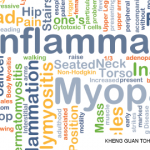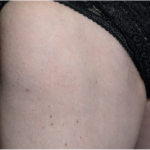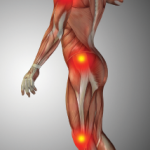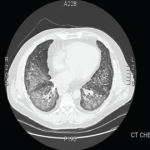NEW YORK (Reuters Health)—Statin use is associated with an increased likelihood of developing idiopathic inflammatory myositis (IIM), researchers from Australia report. “[Although] the incidence of IIM is rare, with the increasing use of statins worldwide and the severity of this condition, this study highlights the need for increased awareness of the condition and the importance…

Managing Myositis in 3 Different Scenarios
SAN DIEGO—In Hot Topics in Myositis, a session held Nov. 7 at the 2017 ACR/ARHP Annual Meeting, rheumatologists discussed treating myositis patients in three different clinical scenarios: persistently elevated creatine kinase (CK), immune-mediated necrotizing myopathies and lung disease. Elevated CK Patients with persistently elevated levels of CK enzyme and normal muscle strength “may still have…

Intriguing Patient Cases Presented at the ACR Annual Meeting Thieves Market
SAN DIEGO—At the 2017 Thieves Market, held Nov. 6 at the ACR/ARHP Annual Meeting, rheumatologists from around the world presented patient cases to an audience of colleagues, who then voted via text messaging to choose the cases they felt were most perplexing or intriguing. The winner received a free 2018 Annual Meeting registration, and the…

Fellows’ Forum Case Report: Progressive Weakness and Debilitation with Skin Rash
The Presentation A pale, quiet woman—her mother—wheeled the girl into my clinic. It was a blistering Florida day, and the girl was shivering. She glanced up at me when I said hello and asked her name. “Hi,” she said, giving me a broad smile. Her smile was the only broad thing about her. Her elbows…

Autoantibodies in Autoimmune Myopathy
In recent years, scientists and clinicians have learned a great deal about autoantibodies occurring in idiopathic inflammatory myopathies (IIMs). These new discoveries have reshaped our understanding of distinct clinical phenotypes in IIMs. Scientists continue to learn more about how these autoantibodies shape pathophysiology, diagnosis, disease monitoring, prognosis and optimum treatment. Moving forward, these autoantibodies will…

University of Nebraska Division of Rheumatology and Immunology Makes Education, Clinical Research Top Priorities
When it was created in 1982, the Division of Rheumatology and Immunology at the University of Nebraska Medical Center comprised one-and-a-half rheumatologists: its founder, Lynell W. Klassen, MD, MACR, and Gerald Moore, MD, who later received formal training at the NIH and now serves as senior associate dean for academic affairs. Thirty-five years later, the…

Myositis AutoantibodiesTriggered by Statins
CHICAGO—On a Saturday morning in Chicago, Chester V. Oddis, MD, director of the Myositis Center at the University of Pittsburgh, explained to a crowded room of about 500 rheumatologists attending the ACR’s State-of-the-Art Clinical Symposium in April how best to use myositis autoantibodies in clinical care. He began with an overview of the different types of…
ACR/EULAR Response Criteria Approved for Adult, Juvenile Myositis
The ACR and EULAR have approved and released response criteria for adult and juvenile myositis, the result of a collaborative initiative that involved the International Myositis Assessment and Clinical Studies Group (IMACS) and the Paediatric Rheumatology International Trials Organisation (PRINTO). The decade-long collaboration was consensus driven, examined multiple clinical data sets and natural history studies,…

Clinical Trial Data Provides Insight into Muscle Biology, Myositis, Myopathies
WASHINGTON, D.C.—Ongoing investigation into the disease mechanisms of inflammatory myopathies is generating needed information for the development of potential future therapeutic targets, and current data from clinical trials have shed light on myopathy concerns in different cohorts of patients. These issues were all discussed in a session titled Muscle Biology, Myositis, and Myopathies I during…

How to Diagnose Antisynthetase Syndrome
Antisynthetase syndrome (AS) is strongly associated with the presence of antibodies to aminoacyl-transfer RNA (tRNA) synthetases (ARSs) that are implicated in the pathogenesis of myositis and interstitial lung disease (ILD). Antibodies against eight antisynthetases have been identified and are detected in 16–26% of patients with idiopathic inflammatory myopathies (IIM).1 Serum assays for five of these…
- « Previous Page
- 1
- …
- 3
- 4
- 5
- 6
- 7
- Next Page »